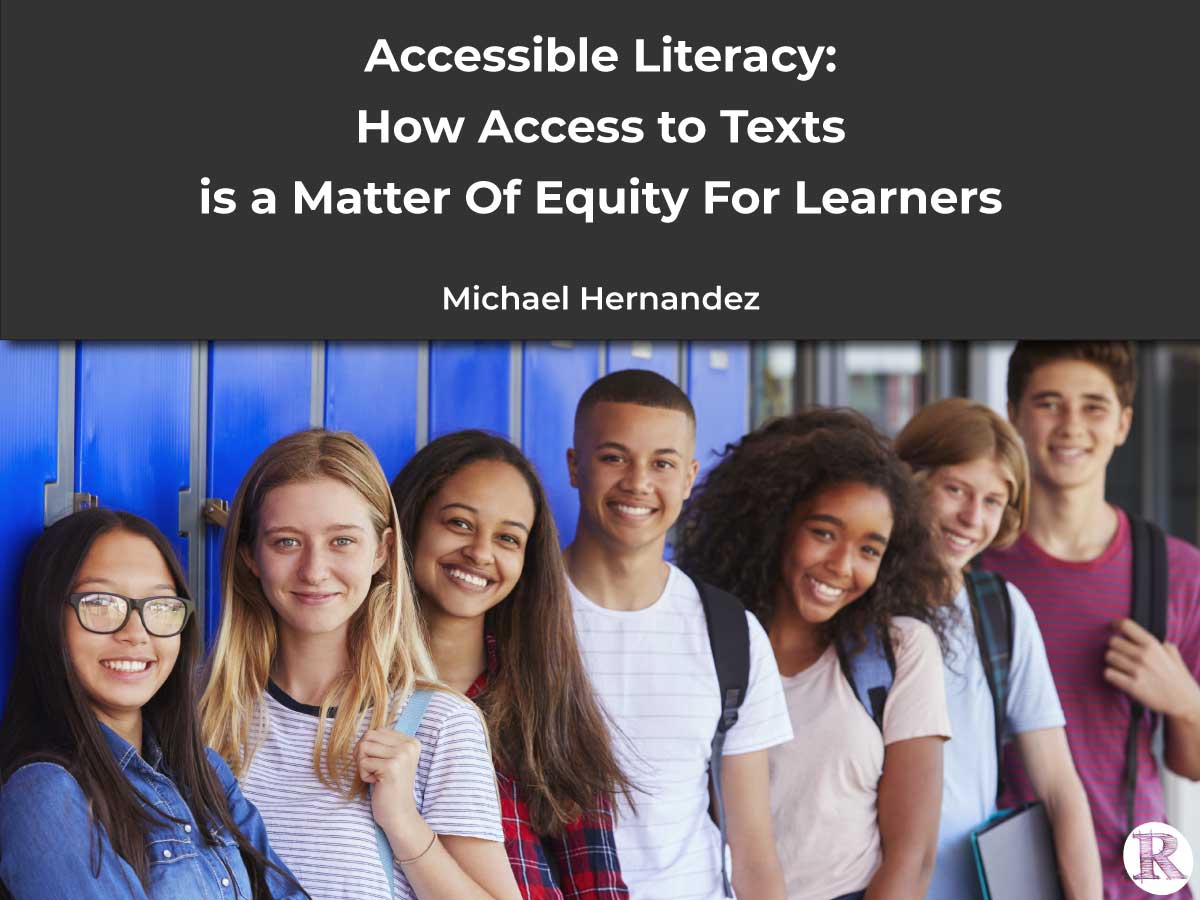Accessible Literacy: How Access to Texts is a Matter of Equity for All Learners
Michael Hernandez
The pandemic and the remote learning that followed highlighted what educators have known for a long time: that learning is a highly individualized endeavor, and everyone learns in different ways and at different speeds. At a time when many parents and educators are concerned about students falling behind due to COVID-related illness or school closures, the stakes for keeping kids on track couldn’t be higher.
Even before the pandemic, schools’ reliance on one-size-fits-all learning activities and assessments had calamitous results for students. Students who are continuously behind their peers in reading level become defeated and lose interest in learning–a pattern that continues into their adult life. (Shaywitz & Shaywitz, 2020). Remote learning exacerbated inequities in learning both in terms of achievement and social-emotional wellbeing, setting many students behind learning targets and creating a new awareness about how important individualized learning is for all students.
We’ve known about the unique needs of students before the pandemic, particularly those with learning disabilities, neurodivergence, or other factors that might impact their learning, such as deaf and hard of hearing students or those with impaired vision. Federal law even protects these students and requires schools to support them with an equitable and accessible learning experience.
With 85% of all curriculum based on text (books, handouts, assessments), providing students with an equitable education also means providing an equitable experience with literacy and reading comprehension. The good news is that there is a solution: personalized digital text.
Unlike printed textbooks and classroom resources which are static and homogenous, digital texts, including websites, PDFs, and digital books, can potentially allow users to adjust how they display text, creating a customized experience for the reader. In research conducted by Readability Matters and Adobe, the ability to personalize digital texts by adjusting font sizes and styles, line spacing, and word and letter spacing improve reading fluency by as much as 40 percent or more. (Proof of Concept Results: Maximizing Individual Reading Performance with Scalable Tuned Text.)
This can make a huge difference for students who are struggling readers, both in terms of academic achievement and with the confidence gained by becoming a successful reader. And it turns out that these features benefit all students, not just struggling readers. Even students who are already successful can become more efficient and literate readers.
Tech companies like Adobe are already developing solutions to literacy inequities. Apps like Acrobat Reader have integrated ‘Liquid Mode,’ where users can customize the size, character and line spacing of digital texts in PDF documents. The ability of textbook companies, websites and digital book publishers to adopt similar features and standards provides opportunities for learners of all levels to reach their true potential. The problem with literacy may not be the reader, but the reading material. (Reading Needs Its Next Gutenberg Press)
Find out for yourself how this works. Try tuning your own text with this hands-on demo, or read more about how the readability of digital texts can help provide a more equitable learning experience for students here: Reader Variability – Toward More Equitable Learning and Assessment.
Reference
Shaywitz, M.D., S., & Shaywitz, M.D., J. (2020). Overcoming Dyslexia, A New and Complete Science-Based Program for Reading Problems at Any Level (Second Edition). Vintage Books, A Division of Random House, Inc.
 About Michael Hernandez: Michael is an award-winning teacher, author and consultant. He is an Apple Distinguished Educator and Lindblad Expeditions/National Geographic Grosvenor Teacher Fellow. Follow him on Twitter at @cinehead and at www.michael-hernandez.net
About Michael Hernandez: Michael is an award-winning teacher, author and consultant. He is an Apple Distinguished Educator and Lindblad Expeditions/National Geographic Grosvenor Teacher Fellow. Follow him on Twitter at @cinehead and at www.michael-hernandez.net




